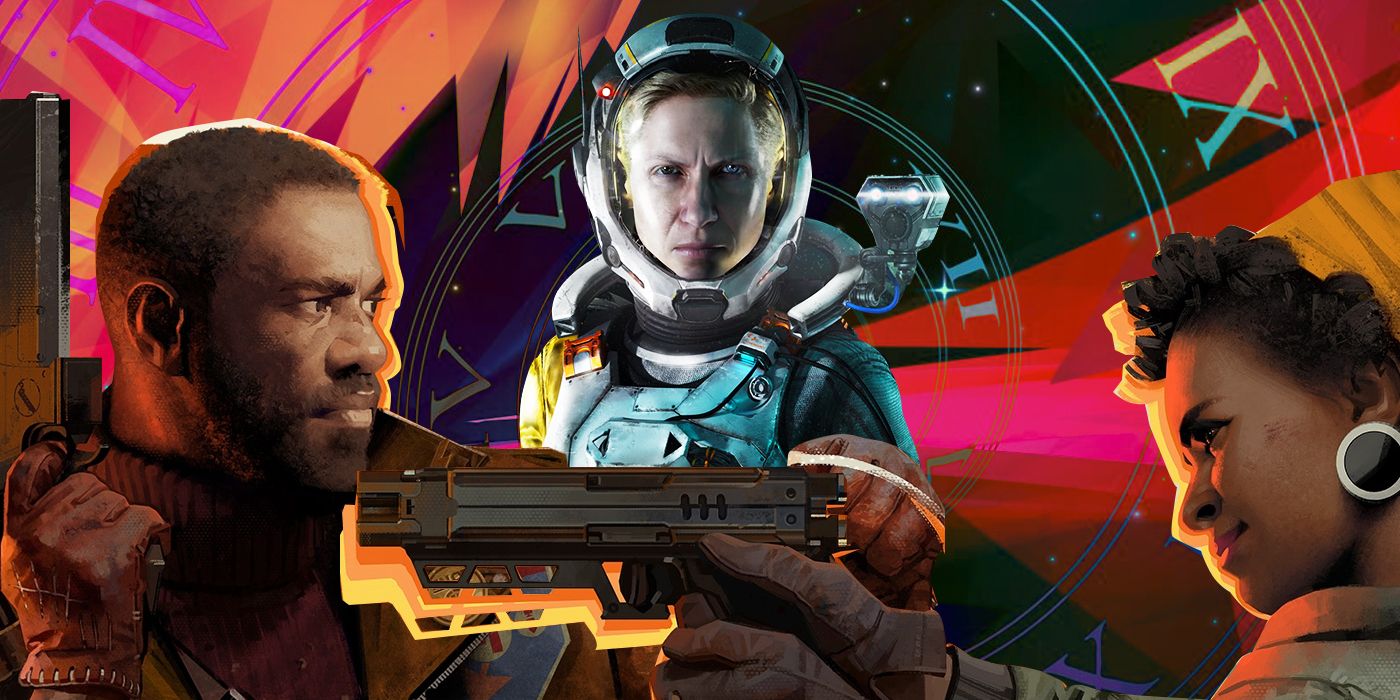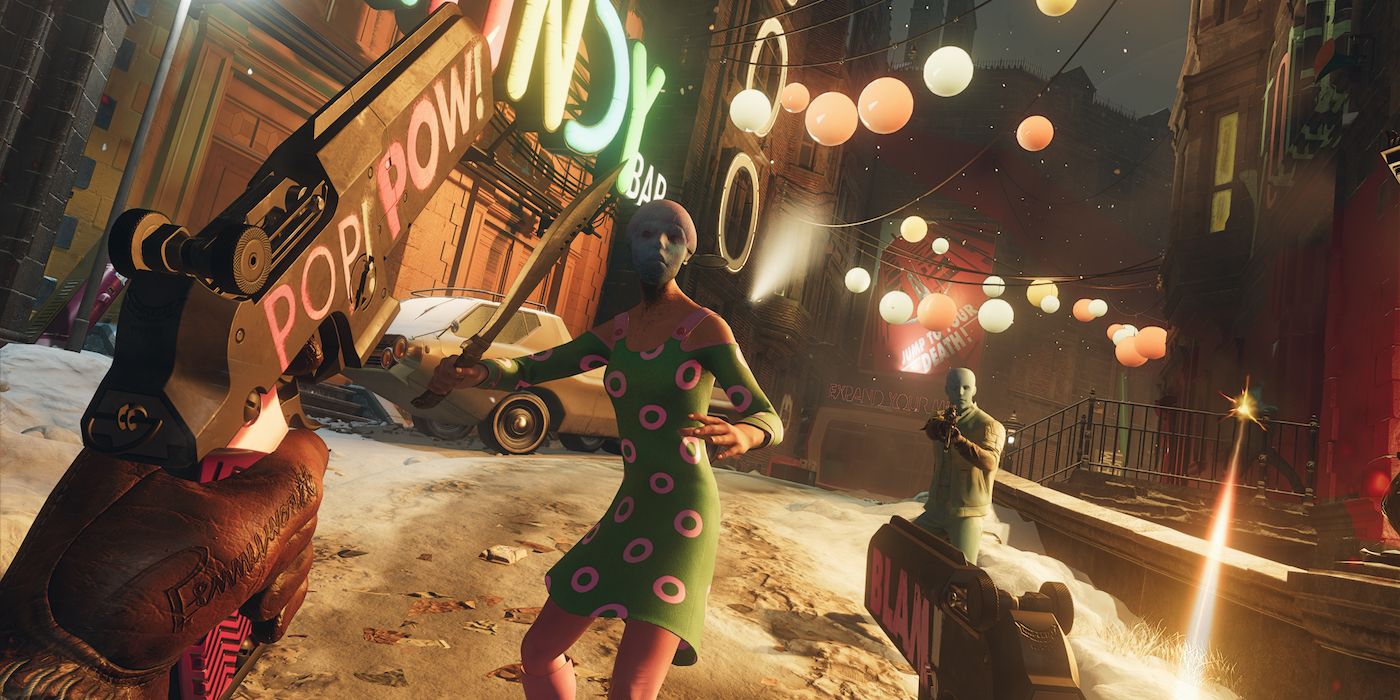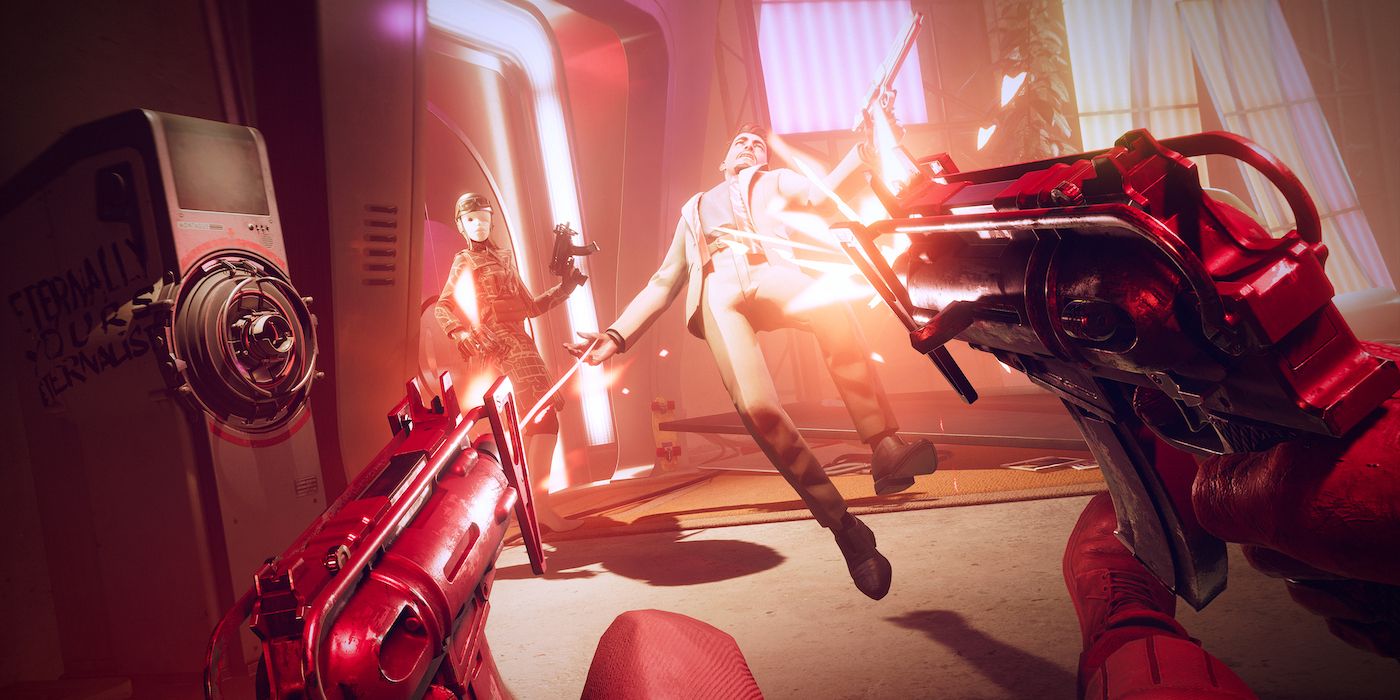Deathloop was just released as a timed exclusive for the PlayStation 5, along with generally favorable reviews. Praised for its unique gameplay, Deathloop has quite an apt and literal title. Playing as a character named Colt, your objective is to break the time loop in the shady town of BlackReef, which cycles through the same day over and over. If at first you don't suceed, die and die again. This "time loop" concept isn't anything new to the medium of video games, and has been a successful method of telling entertaining stories in films like Edge of Tomorrow and Looper. What is it about the time loop that makes it such a compelling concept to incorporate into video games? The pattern is there, especially in recent releases like 12 Minutes, Returnal, and of course Deathloop. Each of these games incorporates the concept of a time loop a little bit differently, and because of that, each one shows what the concept has to offer to the medium of video games as a whole.
For one thing, the concept of a time loop inherently lends itself to storytelling. The idea of having to repeat the same events over and over, with each time being a little bit different and taking something new from it, is something that can work with a whole slew of concepts. That's what was behind the creation of this years other PlayStation exclusive, Returnal. Narrative Director Gregory Lueden himself said so, stating in an interview with GamesRadar that "The cyclical nature of the narrative design means the more you push forward, the more you discover Selene. What does the cycle do to someone?" Time loops in video games mean that you not only have to create interesting gameplay mechanics to keep the cycle fresh, but the narrative is just as important. What does the cycle mean for the player? What does it entail for the characters that the player is in control of?
This is evident in Returnal, and it is especially evident for a video game like Deathloop, which incoprorates all sorts of lore and collectibles that, when all found throughout the multiple phases of the loop, tell the whole story of Colt and why he wants to escape BlackReef in the first place. This sort of storytelling mechanic also gets players more invested in the game than ever before, providing a new layer of interactivity that would otherwise not be present without the time loop mechanic. The story of time loops also lends itself to more puzzle concepts, with players asked to figure out how to "break the loop."
Even more important than story is the gameplay mechanics of a time loop centered video game. This mainly comes from the developers of these games asking questions such as "what about this game's structure would encourage players to become familiar with it to the point where they become experts?" In the case of Deathloop, it is for survival, gameplay advantages for the player, and completion of the story. Deathloop's FPS gameplay and escalated threats lead to a need for better guns. However, each day leads to a reset of inventory, unless certain upgrades are collected which allow you to take a certain amount of inventory back with you whenever the time loop resets. It is in gameplay mechanics such as these that the time loop concept in video games stands out the most.
In the case of other recent time loop games Returnal and 12 Minutes, the objectives are more or less the same as Deathloop, but they are approached differently. Returnal puts on display a wide variety of enemies with changing behaviors depending on what time loop you are in. Compared to the variety of enemies in Deathloop, Returnal has an entirely different approach to putting obstacles in your way to prevent you from breaking the loop. An even farther stretch in difference of obstacles is the limited time given to the player in 12 Minutes. Players are given free reign in an apartment to combine items scattered throughout the area in each loop to different results. Time loop games all have the same objective more or less, but how each game decides to get there is up to not only the game, but also to some extent how the player decides to approach it as well.
The need to bring back particular items with you to achieve different variations of success in the same scenarios makes something as standard as an FPS have a new and exciting flair to it. Deciding which guns work and which ones don't on another run of the same section of the day you were just in is what games like Deathloop encourages. Familiarity may breed contempt in other games, but the ones incoproating time loops breed an entirely different dedication from the player to learn the game and gameplay inside out. Returnal's third person shooter gameplay is wildly different from Deathloop. It requres less precision, but it is also entirely more punishing than Deathloop.
Returnal's gameplay and time loop system is based on long periods of "runs" that do not have a manual save option other than putting the PS5 into rest mode. Because of that, any failures on one of your "runs" results in huge losses of progress and the restart of a time loop. Time loop video games have the potential to be as rewarding and punishing as Returnal or as laid back and encouraging of exploration like Deathloop.
The map design is always intergral, but it is especially important when it comes to games that feature a time loop. When you have players going through the same area multiple times, the locale has to be interesting. In a game like 12 Minutes, keeping the player going through the same apartment over and over could seem repetitive and boring. However, the locale is sure to be filled with intricate enviromental design and different puzzles to solve in each repeat of the scenario. This is just as true for Deathloop, whose 1960s-inspired environmental design and the creative architectural structure of BlackReef lends itself to constant exploration. Even detours that aren't there in one part of the day could be there in another section.
Returnal's backdrop of the planet of Atropos is essential to the time loop concept as well. The procedural generation of rooms made on the decrepit mechanical planet keeps players on their toes, a far cry from the design of BlackReef in Deathloop. Each area of the planet Atropos feels distinct from one another, to give players a sense of where they are at in the loop. It is similar to Deathloop's distinctions between the different times of the day. No matter what, time loop video games know how to make each locale feel unique in order to help the player in their problem solving and advancment through the never ending cycle.
Time loops in video games, if anything, are a product of the repetetive nature of games that came before. Taking that repetition and using it as a device to implement new puzzles, and having players approach how they play the game in a more creative way is what time loops are about. While the word "repetitive" is something used to describe a negative aspect of a game, the video game time loop is one that uses such a thing to its advantage.
Deathloop and Returnal are only the beginning if players continue to positively receive the concept of these games as well as they have. Add to that indies experimenting with time loop games like 12 Minutes to make new interesting puzzle games while being able to reuse the same assets, and you have a new rising genre of video game. Something akin to the boom of battle royale games in the past few years, the time loop video game has true potential to rise above other gimmicks and selling points in recent years to make a truly creative, immersive, and innovative genre of video game that will show what the medium has to offer.



